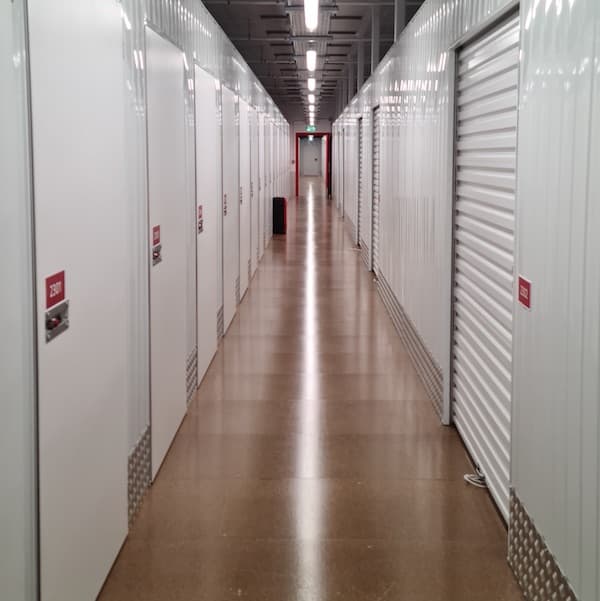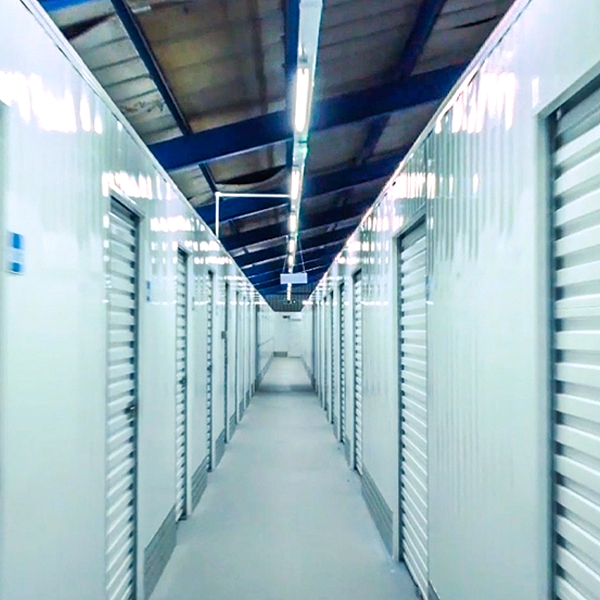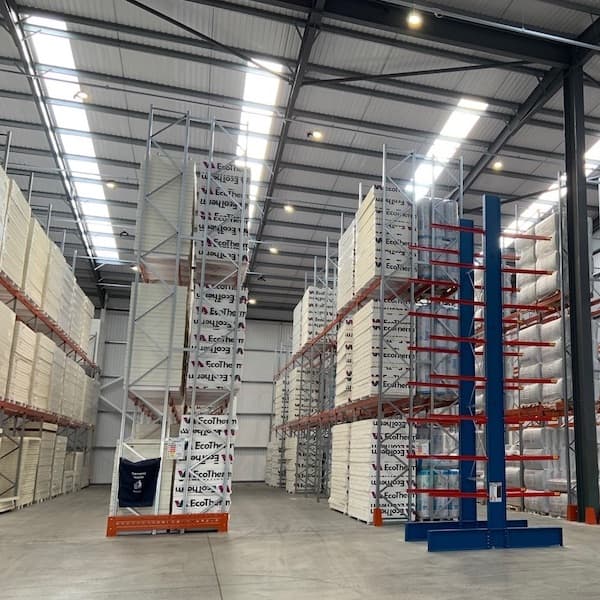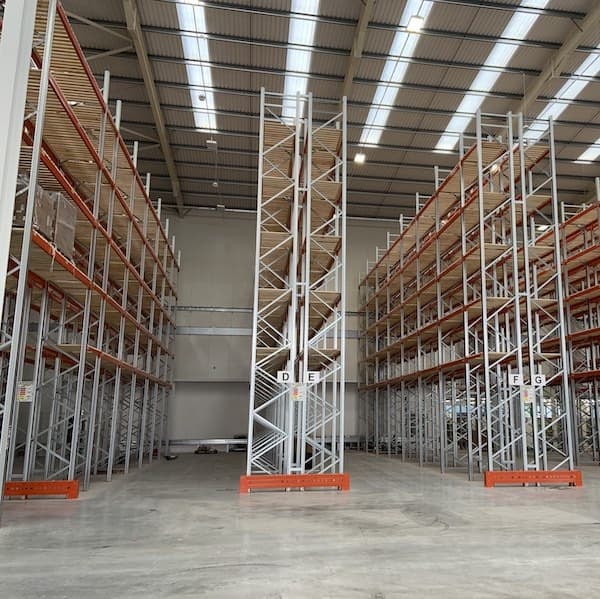- Mezzanine Floors
- Solutions
- Multi-Tier Mezzanines
- Mezzanine Pallet Safety Gates
- Mezzanine Staircases
- Mezzanine Handrails and Balustrades
- Mezzanine Decking
- Fire Protection for Mezzanine Floors
- Mezzanine Lift Shaft Design and Installation
- Resources
- Mezzanine Floor Calculator
- Mezzanine Floor Regulations and Building Control
- Self-Storage Mezzanine Floors
- Self-Storage Units
- Resources
- Self-Storage Site Selection Information
- Calculating The ROI of Self-Storage Conversions
- Planning for Automation in Self Storage
- Racking & Shelving
- Solutions
- Cantilever Racking
- Pallet Racking
- Coil Racking
- Longspan Shelving
- Tyre Racking
- Kimer Racking
- Live Storage Racking
- Drive In & Drive Through Racking
- Clip Shelving
- Mobile Shelving
- Custom Fabrications
- About Us
- USS Case Studies
- Self-Storage Fit-out For Raked Ceiling Building
- Mezzanine And Staircases For Entertainment Venue
- New Mezzanine And Staircases For Major Retailer
- Mezzanine Pallet Safety Gate
- Self-Storage Fit-Out Project For Brand New Facility
- Warehouse Racking, Wire Mesh & Shelving for New Warehouse
- Self-Storage Partition System & Components Installation
- Self-Storage Store Mezzanine And Staircases
- Multi-Tier Mezzanine For Logistics & Distribution Facility
- Warehouse Plant Platform
- Self-Storage Facility Space Expansion
- Mezzanine Floor For Distribution Warehouse
- Bespoke Feature Staircase & Mezzanine
- Single Level, Multi-Use Mezzanine
- Mezzanine For A New Building
- Mezzanine Floor For Plumbing Supplies Warehouse
- New Racking System and Mezzanine Floor
- Car Park Conversion To Self Storage Facility
- Pallet Racking and Cantilever Racking For Warehouse
- Two Mezzanine Floors For Self-Storage Facility In Birmingham
- Our Accreditations
- Contact Us
- USS Case Studies
The Latest Blogs From USS
Tyre Storage - Getting it Right When Your Business Depends On It
read

There are several reasons people might have to store tyres, the most obvious being that they sell new or replacement tyres and require a stock of various sizes and types on hand at any given time.
Alternatively, anyone who runs a vehicle for business or personal reasons might opt to switch between winter and summer tyres at certain parts of the year. Winter tyres, for example, feature tread patterns specifically created to push ice and slush away and grip more effectively on frozen surfaces and manufactured from a rubber compound designed to stay softer at low temperatures, maximising control of any vehicle.
However, the same rubber compound would not be hard-wearing enough when used on warmer surfaces in the summer and wouldn’t provide the grip needed when roads are wet or dry at higher temperatures.
Whichever set of tyres is not in use will need to be stored safely, and if this requirement is multiplied across even a relatively small fleet of vehicles, the number of tyres in need of storage can soon grow to a significant size.
Introducing The ‘Tyre Hotel’
Demand of this kind is one of the factors behind the emergence of so-called ‘tyre hotels’ – purpose-built facilities equipped to store large numbers of tyres at any given time and designed to provide a service for drivers making the switch between summer and winter tyres.
Anyone spending the kind of sums needed to equip a vehicle or vehicles with two sets of premium tyres will be motivated by a desire to protect their investment, which is the service tyre hotels offer. What needs to be understood by anyone considering providing or accessing tyre storage of this kind are the strict conditions that must be met in order for tyres to be stored safely, which is to say in a manner capable of preventing the surfaces of the tyre – and the wall of the tyre in particular - degrading through drying, splitting or cracking.
Here at United Storage, we understand those conditions and the kind of racking needed for safe tyre storage. For that reason, we provide tyre racking in a range of modular units designed for maximum flexibility. We also understand how the wider environment can impact storage decisions and provide advice for clients new to storing tyres – either for their own use or as a business.
Safely Storing and Handling Tyres - Not As Easy As It Seems!
What many people might not realise when storing tyres is just how carefully they need handling. It’s all too easy to assume that any damage inflicted on a tyre is likely to occur via the wear and tear of normal usage. Still, the truth of the matter is that incorrect storage – particularly over the period of several months between summer and winter tyres – can lead to compromising the integrity of tyres.

When a tyre is used, for example, any chemicals applied to the surface to protect from UV rays will be distributed evenly. Once it stops moving, dry patches are likely to develop, leaving areas of the tyre vulnerable to drying out and being damaged.
For this reason alone, it is vital that tyre storage racks are installed indoors and in places where UV rays can’t reach them.
The tyres also need to be cleaned to remove substances such as motor oil and petrol before they are dried and placed on the appropriate racking before storage.
Create a Protective Environment for Your Tyres
Other aspects of the surrounding environment need consideration if the tyres are to be stored safely. These include choosing a space that offers reasonable ventilation levels and low humidity and where the temperature can be kept to below 25°C.
For this reason, the space needs to be free from artificial sources of heat, including pipework that might be carrying hot water through the space.
In addition to heat and UV rays, the tyres need protection from ozone, which means storing them away from equipment such as welding gear, electrical motors, and transformers. The combustible nature of the rubber used for tyres means they also need to be protected from sparks and electrical discharges, as well as a wide range of substances including, but not limited to, lubricants, acids, disinfectants, fuels, and solvents.
Although different tyre manufacturers will provide a definitive list of the substances and environmental factors likely to prove damaging to their products, a safe assumption is that any storage should protect tyres from the weather, excessive heat, and foreign chemical agents.
Providing you can create or utilise a space that guarantees all of this, then you’re in the position of being able to start thinking about the practicalities of tyre racking.
Tyre Racking is Essential, Not Optional
Even if you have the perfect space for tyre storage, racking is needed to provide the physical support needed to preserve the integrity of the tyres. If you’ve only got four tyres to store and a spare corner in a garage, you might be tempted to simply stack them on top of each other and throw a tarpaulin over the top, but this would be a huge mistake.

The first principles of any tyre racking are that it lifts the tyres off the ground and stores them vertically. In this way, each tyre is stored with the minimum of contact with the rack itself or other tyres and no pressure placed on it.
The racking should also be strong enough to support tyres of varying weight and with adjustable beams to accommodate varying sizes.
Modular Racking Gives You More Flexibility – and Frees Up More Space
As we've said earlier, the tyre racking designed and installed by USS is modular in nature, which means that clients can quickly adapt their racking to accommodate shifts in the stock being stored. The height of each beam can be altered as more storage layers are needed, driven by the size of the tyres that will also determine the width of the beams.
The open design of our tyre racking makes it easy to access and remove or replace tyres as and when they are needed. However, note that heavier tyres need to be placed lower in the racking to minimise the health and safety risk for any operatives removing them.
With tyre racking that extends overhead height, employees should use safety stairs when accessing the higher items, and if safety stairs aren’t available, they should store only tyres less than 10kg in weight above head height.
If you’d like to know more about the tyre racking provided by United Storage, and advice on the kinds of installation methods that are relevant to your business as well as the varied tyre storage solutions we offer, please get in touch with us today.
This blog is for information purposes only and should not be construed as legal or financial advice and not intended to be substituted as legal or financial advice.
Find Us
S & L United Storage Systems Ltd
United House, The Street
Takeley, Bishop's Stortford
Hertfordshire, CM22 6QR
Company No. 1313816
VAT No. 291616253Say Hello
01279 871 787Copyright © 2025 S & L United Storage Systems Ltd. All rights reserved.
- About Us






